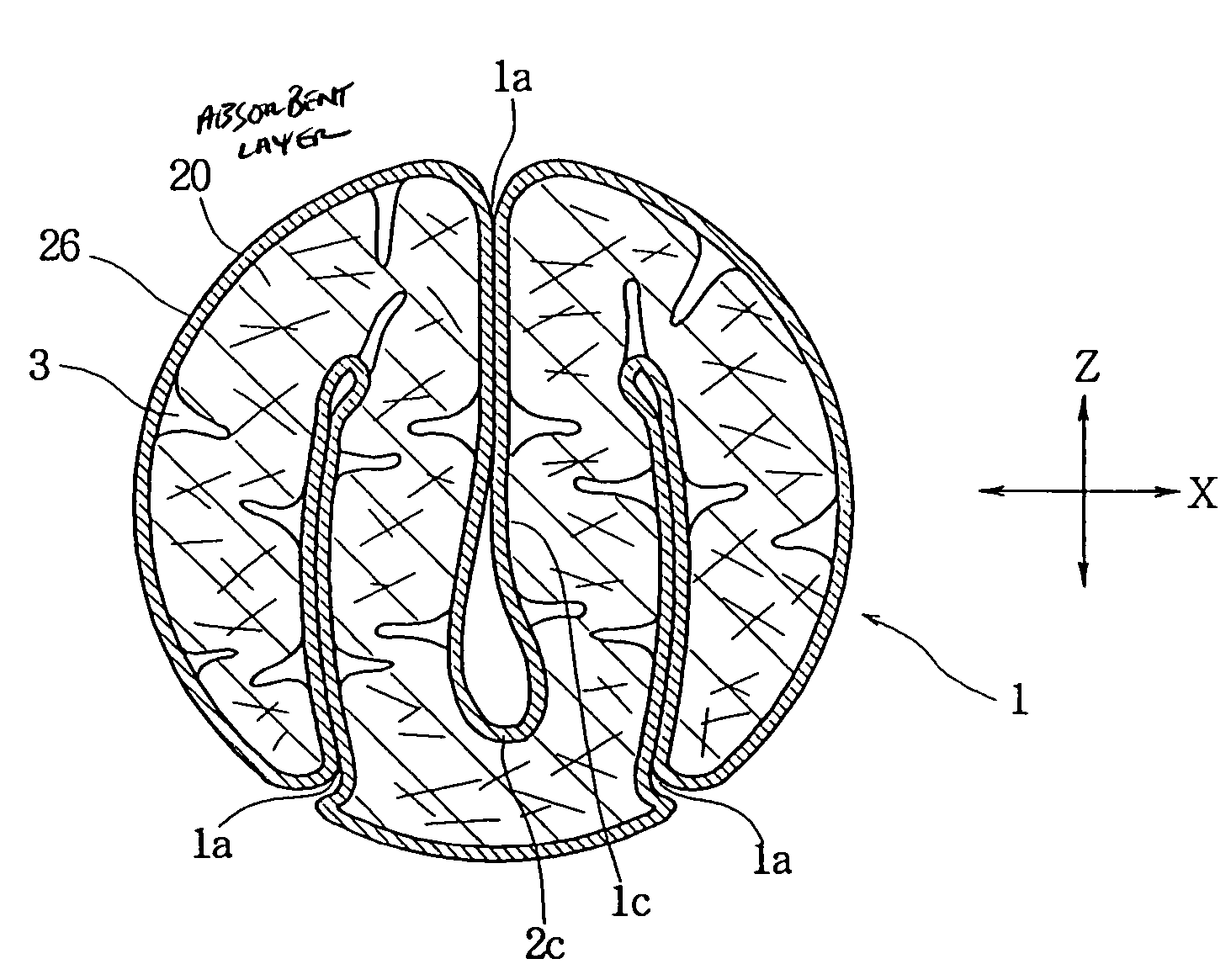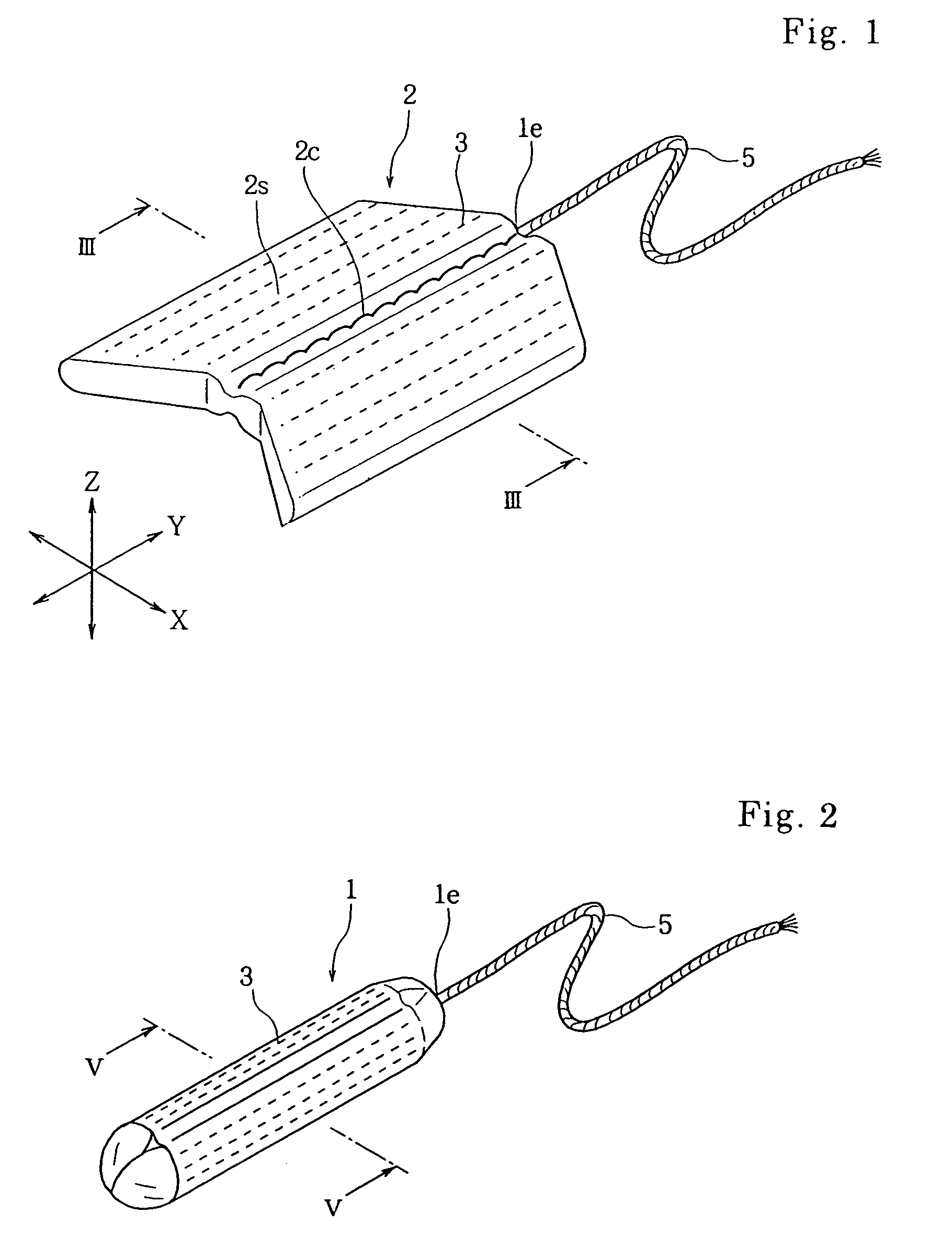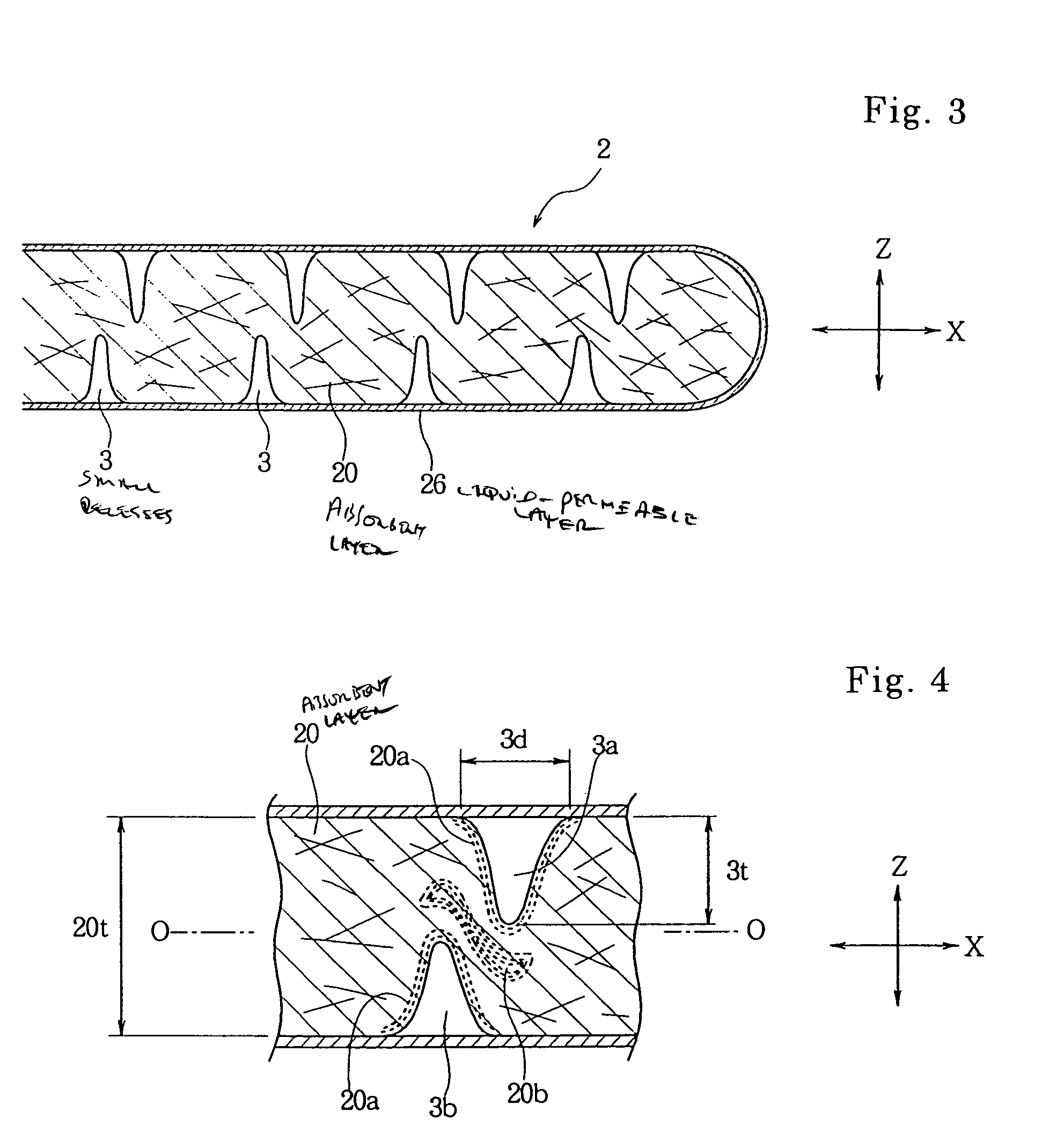Sanitary tampon
a tampon and sanitary technology, applied in the field of sanitary (hygienic) tampons, can solve the problems of low absorption rate of menstrual blood, long time for compression tampon to restore its bulk, and inability to fully absorb tampons, etc., to achieve high swelling rate and high absorption rate
- Summary
- Abstract
- Description
- Claims
- Application Information
AI Technical Summary
Benefits of technology
Problems solved by technology
Method used
Image
Examples
example
[0054]A tampon according the first embodiment of the invention was manufactured in the following manner. There was prepared a fibrous web made of rayon and having a basis weight of 950 g / m2 and a thickness of 5 mm. An absorber was obtained by covering the fibrous web all over its surface with a spun bond nonwoven fabric made of polyethylene terephthalate and having a basis weight of 12 g m2. Small recesses were formed in the surface of the absorber by clamping and compressing the absorber from the upper and lower surfaces thereof with needles formed in a density of 4 needles / cm2. At this time, the thickness was unvaried at 5 mm, and the density was 0.125. g / cm3 in the vicinity of the center (over a thickness of about 1 mm) and 0.45 g / cm3 in the vicinities of the upper and lower surfaces (individually over a thickness of about 2 mm). After this, the absorber was compressed and formed generally into a M shape, as shown in FIG. 5, to manufacture the tampon as shown in FIG. 2. This tamp...
PUM
 Login to View More
Login to View More Abstract
Description
Claims
Application Information
 Login to View More
Login to View More - R&D
- Intellectual Property
- Life Sciences
- Materials
- Tech Scout
- Unparalleled Data Quality
- Higher Quality Content
- 60% Fewer Hallucinations
Browse by: Latest US Patents, China's latest patents, Technical Efficacy Thesaurus, Application Domain, Technology Topic, Popular Technical Reports.
© 2025 PatSnap. All rights reserved.Legal|Privacy policy|Modern Slavery Act Transparency Statement|Sitemap|About US| Contact US: help@patsnap.com



